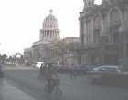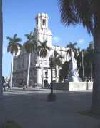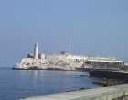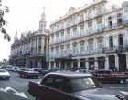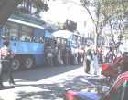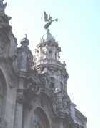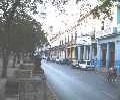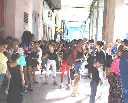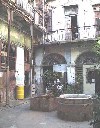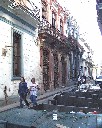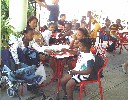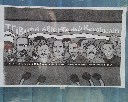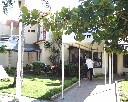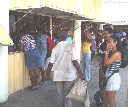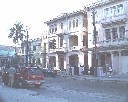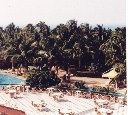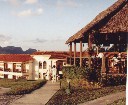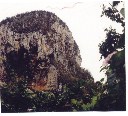My wife and myself had the great pleasure recently to had been invited to Cuba for a couple of weeks. I accepted the invitation with hesitation: I do not like to get anything that is impossible to reciprocate. This was definitely a typical case of getting a tremendous gift that one never can compensate.
Two weeks is a very long time if you look at it from this point of view, but nothing in case your curiosity is on high level. My intention was - as always is - to guess, how people in the given country live. I am afraid this time I was unable to feel the pulse of the nation. I warn you that whatever I write here I write with doubts, do not take anything for granted.
Every theme I start with a quotation, taken from an excellent travel guide*. Then I am trying to express how I feel about it, what were my personal impressions. Let us start:
History
"First inhabited in Pre-Columbian times, Cuba was later conquered by the Spanish, who ruled here for four centuries. The island gained independence in 1899, only to come under the virtual control of the US, with the help of dictators Machado and Batista. The Revolution headed by Fidel Castro and Che Guevara, who defeated Batista on 1 January 1959, was a turning point for the country. The new political systam achieved major social results and Cuba is now finally emerging from decades of isolation." (p. 39) A few points that struck me:
Aboriginal Indians
Cuba is said to be the only country where Indians have been annihilated completely, no trace of them remained. The only case when they tried to stop the cruel killings ended in burning the chieftain Hatuey at the stake (1512). (Remarkable coincidence: the Hungarian chief of a peasant rebellion was burnt on a red-hot throne in 1514!). There is a place called Indian village, huts, statuettes portraying Indians, a tent, in which young girls invite you to make a few dancing steps: if you like a pleasant walk in beautiful suroundings, go there, if not, don't. Just memorize the name of the brutal aggressor: Diego Velázquez.
Slavery
The lack of cheap labor "forced" the Spanish occupants to import it. They brought them from western Africa in their greatest numbers from the late 18th to the early 19th century, altogether around one million men and women. By 1830 they made up more than half of the population of Cuba.The country was the last American colony in freeing the slaves (1886). Thanks to the black labourers the Cuban sugar industry occupied the first place in the world in 1830.
"Independence"
The revolutionary movement - that started in the 18th century as the rise of the Creole aristocracy and intellectuals for Cuban natioanal identity - for the independence from Spain took serious forms in 1868 with a war that the Cubans won. The declared independence did not last long: the Spanish came back with avengeance. The success was secured only after José Martí - then in exile - established the Partido Revolucionario Cubano, which was able to unite the forces in favour of independence. The war was renewed in 1895 and it was close to a victorious end around the beginning of 1998 when the US sent a battlecruiser, the Maine on the 15th of February to Havana "to protect US citizens and property". The ship soon and misteriously exploded (!?), causing the death of 250 marines. The US blamed Spain for the loss of the ship, intervened in the war, defeated the Spanish fleet on the 3rd of July, swept aside Cubans and signed the Treaty of Paris with Spain on the 10th of December, ending the Spanish rule in America. The keys of Havana were handed over by the last Spanish governor, Jímenez y Castellanos to US general John Brooke. (We call it: "Out of the bucket into the pail" or as the English express it: "Out of the frying-pan into the fire." At any case, it was probably the beginning of the "new world order")
Uncle Sam was nice enough to let the Cubans play their games of an independent country:Cuban constitution and president in 1901, but Platt Amendment, securing full control to the US in the same year, including naval bases, formal independence granted in 1902, but (I quote the guide) "in the years that followed American involvement in the local economy increased and, on the pretext of safeguarding their citizens and investments, the US sent marines to the island on many occasions".
Dictator after dictator
The following close to 60 years were the years of American domination. Absolutely open backing of dictators by the US, ruthless repression of every movement aimed at democratic changes, at betterment of living conditions of the population. One of the worst scenarios of Latin-American type of repression. The peak probably was the coup staged by Batista on the 10th of March (shame: my birthday!) 1952, when the popular Orthodox Party, combining the progressive forces of the middle class was about to win the general elections that were to take place a few month later. " Batista's government, having the official support of the US abandoned its initial populist stance and became an out-and-out, violent dictatorship indifferent to the needs of the Cuban people. In fact, vast areas of land were sold to American and British firms and the money was pocketed. ... Cuba was becoming a 'pleasure island' which held an overpowering fascination, especially for Americans. ... By the 1950s Cuba was famous for glamour - its music and cocktails, its splendid prostitutes, cigars, drinking and gambling, and the sensual tropical life attracted mafiosi and film stars, tourists and businessmen, in equal measure. However there was a high price to pay: Cuba had not only become a land of casinos and drugs, it had also fallen into the hands of the American underworld, which ran the local gambling houses and luxury hotels, used for money laundering" - this is how the situation is described by our guide.
Why do I spend so much time on the history of Cuba? I hope you'll understand soon.

54. Atrium of the Museo de Arte Colonial

44. Plaza de la Catedral - Museo de Alfabetización

45. Plaza de la Catedral - Palacio de los Marqueses de Aguas Claras

46. Plaza de la Catedral

49. Cab-rank
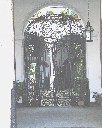
47. A gate of Palacio de los Marqueses de Arcos
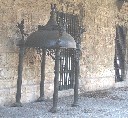
51. At the Palacio de los Capitanes Generales

50. Seminario de San Carlos y San Ambrosio

53. Heroes and heroines of Cuba
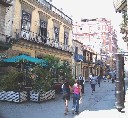
52. Calle Obispo

48. The Old Lady and her Window

43. La Bodeguita del Medio
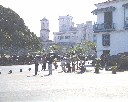
40. Castillo de la Real Fuerza
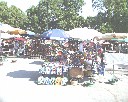
42. Flea-market

41. Destruction


